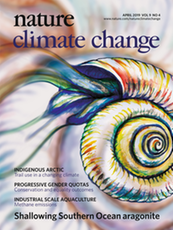The world is seeing unprecedented destruction of natural resources and the rapid reduction of plant and wildlife populations as a result of human activity. The world recognizes we need to protect mother earth and its colonies of species living here – our only hope is collective action – a movement that must be informed by trusted research.
Springer Nature joins the Earth Day Network’s 2019 Earth Day, Protect our Species, campaign offering libraries, researchers, students, and professionals insights to some of the top research across species, conservation, sustainability and more. We share this in efforts to help researchers find solutions to help slow the destruction of planet earth. For more information about adding these research resources to your library, contact us.






